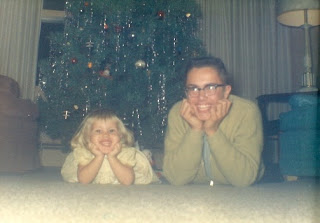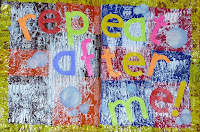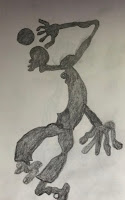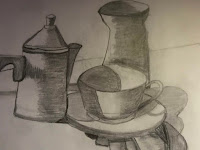Same shit, different holiday
By DEB SAINE
Dec. 23, 2018
im2insaine@mac.com
But instead of feeling excitement, I felt dread. And instead of thinking, "Oh, I can't wait to see what it is," I wondered if I should bother opening it or simply toss it into the trash and be done with it. It's a familiar game I play of "to open or not to open" similar to plucking flower petals and asking if, "she loves me, she loves me not."
Rarely — if ever — does anything I receive in the mail from the sibling bring a smile to my face. His dispatches tend to be more like a gut punch or a face slap. In the past, depending on my mood, I've either immediately scrawled the edict, "Return to Sender" on the front of the toxic envelope and included a big, black arrow pointing to the sender's address and left it for the mailman to take it away or taken the unopened correspondence and tossed it directly into a trash can without giving it a second thought.
Unfortunately, curiosity sometimes gets the better of me and yesterday was one of those. I decided to go with the "open" option. After I saw what was inside the package, I gave myself a mental swift kick in the ass followed by a stern talking to that included a loud "told you so!" and a repetition of this quote of Maya Angelou's: "When someone shows you who they are, believe them the first time!"
And believe me, I know all too well what kind of sibling my older - and only - brother has been for the entirety of my life. After his 70th birthday came and went this past July, I, at the age of 58, officially ended my decades-old quest of winning him over. I accepted once and for all that he isn't worth my time primarily because I've never been worthy of his.
I knew right away what his "gift" was which wasn't a gift from him at all. It had been gifted to him by the same person who'd already given me a similar gift the night before.
Several months ago, the house where I'd grown up was destroyed in a fire. I hadn't been inside since the day Mom and I moved out and into an apartment. I was 12 and my parents had divorced. The sibling, who hadn't lived full-time at that house for several years, had gotten married the previous fall and moved out of state with his bride.
So the house my father had built was sold and went on to be owned by a number of different families over the years and its exterior changed to reflect the tastes of its various inhabitants. When the house burned, it was occupied by the mother-in-law of a former high school class- and teammate who has remained a friend through the years.
She thought it would be nice for the sibling and I to each have something from our former house that was no more. She had retrieved pieces of wood from the burned-out structure and had them made into picture frames. The framed photograph she gave to me was a black-and-white taken of Mom and me standing on the front porch. I was probably 8 or 9 and wearing a straw hat that Huckleberry Finn would have coveted.
The photograph she had chosen to give the sibling was a colored one snapped during a long-ago Christmas when I was around 3 or 4 and he was 14 or 15. We were both laying on our stomachs, elbows propped up and chin in our hands, underneath a tree filled with ornaments, big colored lights and icicles, lots and lots of icicles. That very photograph has been on display for years in a frame placed on a living room bookshelf that holds all my Christmas-themed books. It's always represented a bittersweet memory.
And now, I have two of those photographs, one framed in green plastic and the other in wood from the house that is no more.
Of course, because my delusional sibling always has believed himself to be a wise man who possesses insight into the life of a sister he knows nothing relevant about and also fancies himself to be a writer of the same caliber as one of Christ's apostles, I knew the "gift" would include one of his missives.
Again, I asked myself to do or not to do, or, in this instance, to read or not to read. The minute I glanced at his salutation, "Aunt Debbie," I barely skimmed the scribbles that followed because he'd purposely chosen to open the brief note with a greeting he knows irritates me to no end.
Even though he hadn't written much, he'd written enough. I took the already crumpled, re-purposed sheet of copy paper he'd written on and put it on top of some article he'd included about "maintaining one's purpose" and then ripped all the pages top to bottom and side to side before dropping all the shredded pieces into the box he'd used to re-purpose the framed photograph of the two siblings who basically grew up as the only child of a couple of people who divorced a few years later.
 |
| Me and my late, great Great Aunt Evie! |































